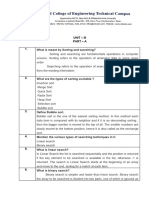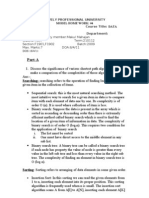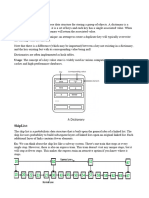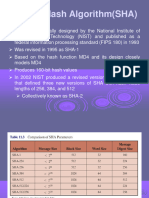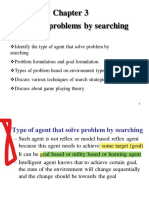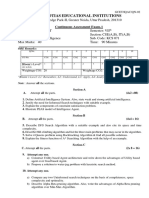0% found this document useful (0 votes)
58 views5 pagesDs Unit 3
The document discusses different data structure concepts including searching algorithms like linear search and binary search, hashing techniques, hash collision resolution methods, and sorting algorithms like insertion sort. Linear search has O(n) time complexity while binary search has O(logn) time complexity. Hashing is used to map keys to values in a hash table using a hash function. Collision resolution methods include open addressing and separate chaining.
Uploaded by
phantom18tmCopyright
© © All Rights Reserved
We take content rights seriously. If you suspect this is your content, claim it here.
Available Formats
Download as PDF, TXT or read online on Scribd
0% found this document useful (0 votes)
58 views5 pagesDs Unit 3
The document discusses different data structure concepts including searching algorithms like linear search and binary search, hashing techniques, hash collision resolution methods, and sorting algorithms like insertion sort. Linear search has O(n) time complexity while binary search has O(logn) time complexity. Hashing is used to map keys to values in a hash table using a hash function. Collision resolution methods include open addressing and separate chaining.
Uploaded by
phantom18tmCopyright
© © All Rights Reserved
We take content rights seriously. If you suspect this is your content, claim it here.
Available Formats
Download as PDF, TXT or read online on Scribd
/ 5











